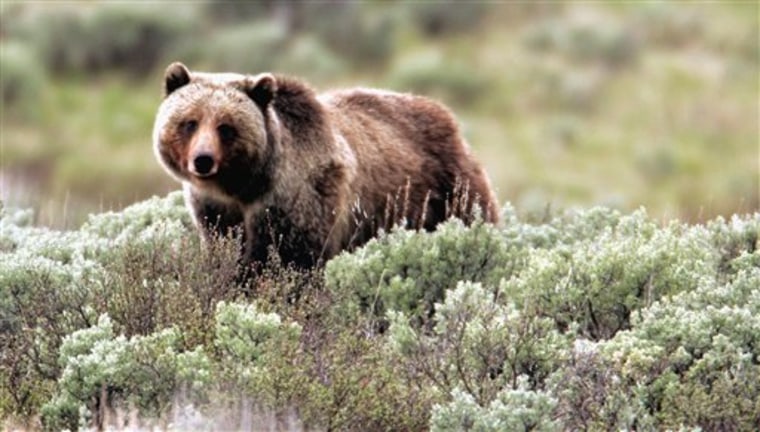The population of grizzly bears inside Yellowstone National Park is being taken off the Endangered Species Act, the Bush administration said Thursday in a widely anticipated move that has divided wildlife activists.
The Yellowstone grizzlies had been listed as "threatened" on the federal list since 1975, when their numbers were estimated at 312 or fewer. Today the population is more than 500.
"There is simply no way to overstate what an amazing accomplishment this is," Deputy Interior Secretary Lynn Scarlett said in a statement. "The grizzly is a large predator that requires a great deal of space, and conserving such animals is a challenge in today’s world. I believe all Americans should be proud that, as a nation, we had the will and the ability to protect and restore this symbol of the wild."
The Fish and Wildlife Service stressed that four other grizzly populations in the lower 48 states "have not yet recovered and will continue to be protected as threatened species under the Act."
Activists divided
The proposal to "delist" the Yellowstone population, first made a year ago, has divided activists.
The Wildlife Society and the National Wildlife Federation backed the delisting, but it was opposed by more than 250 scientists and researchers who called it premature. Those against included primate researcher Jane Goodall and bear researchers John Craighead Sr. and Chuck Jonkel.
The environmental law firm Earthjustice also opposed delisting. "Just like polar bears, grizzly bears are threatened by global warming," Earthjustice attorney Doug Honnold said. "They live in a world of shrinking habitat due to warming weather. The Fish and Wildlife Service didn't see global warming coming and has no game plan for the loss of whitebark pines and the related harm to grizzlies."
In a position statement, The Wildlife Society said that steps taken by state and federal agencies, such as the development of an overarching conservation strategy, "represent an acceptable framework" for regulation and management post-delisting.
Some lawmakers from the region also supported delisting.
Sen. Craig Thomas, R-Wyo., said removing the bears from federal protection after 30 years is a "laudable milestone," but said "taking the bear off the list took far too long — 15 years too long in fact."
"At long last," added Sen. Mike Enzi, R-Wyo. "Decades passed. The bears increased in number. The federal government stood immobile. Today that is finally changing. Grizzly management will shift to the state where it should be."
Hunts possible
The Yellowstone grizzly bears were first listed because of loss of habitat and high mortality resulting from conflicts with humans.
Stripping the bears of protection could eventually clear the way for limited hunting of the massive animals. In February, the Montana Senate overwhelmingly approved a measure to allow hunting of grizzly bears and wolves once federal protections were removed.
The U.S. Fish and Wildlife service has also recommended delisting gray wolves in the Northern Rockies, but a disagreement with Wyoming's proposed management plan has stalled the process.
Few species have been removed from the endangered list since the law was signed by President Nixon was signed in 1973.
